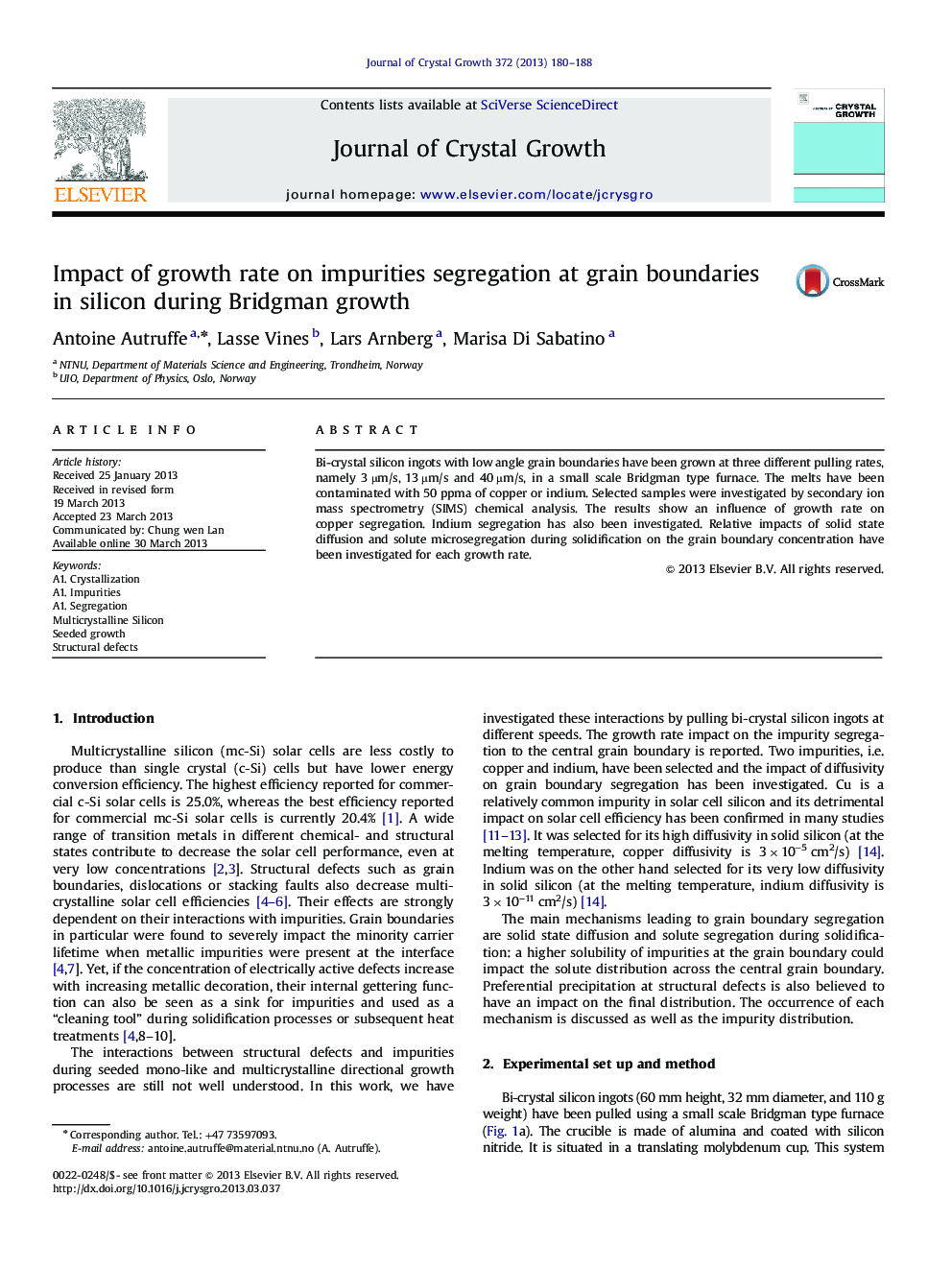| Article ID | Journal | Published Year | Pages | File Type |
|---|---|---|---|---|
| 1791012 | Journal of Crystal Growth | 2013 | 9 Pages |
•Cu- and In-contaminated bi-crystal silicon ingots were grown at different rates.•Segregation of impurities at central grain boundary was investigated.•Quasi-monocrystalline growth mechanism is assessed.•Grain boundary decoration is more important for lower pulling rate.•Microsegregation evidence was found by detecting indium segregation at slow pulling rate.
Bi-crystal silicon ingots with low angle grain boundaries have been grown at three different pulling rates, namely 3 µm/s, 13 µm/s and 40 µm/s, in a small scale Bridgman type furnace. The melts have been contaminated with 50 ppma of copper or indium. Selected samples were investigated by secondary ion mass spectrometry (SIMS) chemical analysis. The results show an influence of growth rate on copper segregation. Indium segregation has also been investigated. Relative impacts of solid state diffusion and solute microsegregation during solidification on the grain boundary concentration have been investigated for each growth rate.
